Feature
Neolithic Pottery, an Aesthetic Impetus for Revolutionary Change
By Text and Photos by Yang Song-hyok
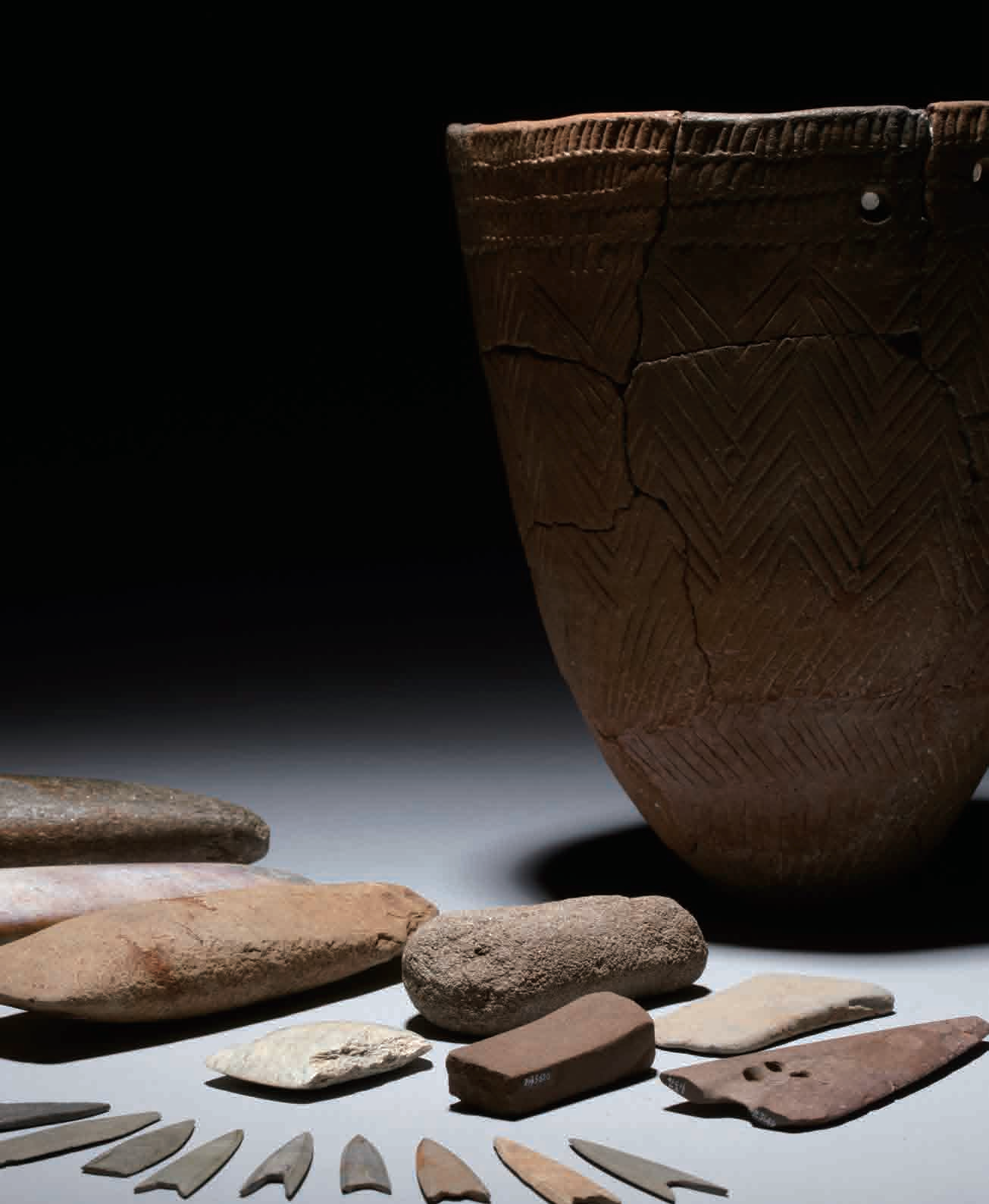
Pottery played a central role in the cultures of the Neolithic Period on the Korean Peninsula. 18
The First Pottery in Korea
Signs of Neolithic change started to emerge about 10,000 years ago on Jeju-do, a volcanic island to the southwest of the Korean Peninsula. Several sites across Jeju have produced pottery shards from this period along with arrowheads, another item characteristic of the Neolithic era. These artifacts are also found side-by-side with stone blades, a typical Paleolithic tool. The pottery from Jeju is undecorated and reddish-brown in color. There are traces of the use of plant stems to reinforce the clay body. Archaeologists call this type of pottery “Gosan-ri style” based on the name of the area in which it was first found. Gosan-ri style pottery is later in date than the earliest East Asian examples of pottery, but it is in line with the primitive pots discovered in other parts of the continent in terms of the forms of the pots and the related crafting methods.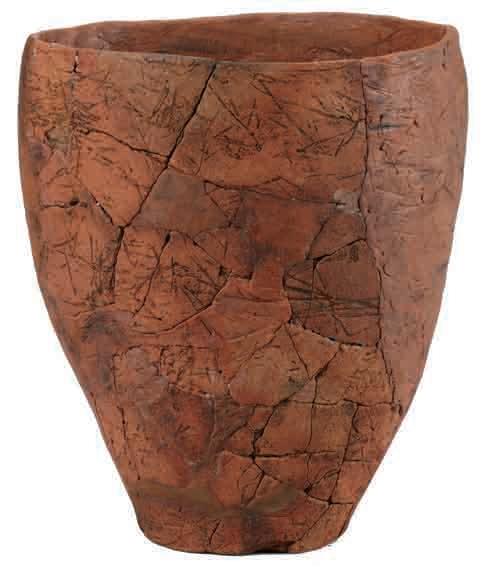
The dominant form of Gosan-ri style pottery is a bowl-shaped pot known as bari.
Uses of Clay Pots
Studies have been carried out on how pottery was invented. According to the research published to date, pottery was used for cooking by hunter-gatherers in the waning phases of the last ice age. Clay vessels offered an attractive means to process and consume foods. With clay pots, prehistoric humans were able to boil or steam plants and animals they collected from nature. Foods that had been too chewy or even toxic when consumed raw became edible, expanding the range of food resources that hunter-gatherers could access. This increase in available food resources is thought to have added stability to the lives of prehistoric humans and spurred cultural development.Evidence of pottery use for cooking can be found in the charred materials on the outer surface of pots that resulted from extended exposure to high temperatures. Substances such as carbohydrates, sugar, and fatty acids discovered from the inside and outside of pots also testify to the use of pottery as a cooking tool. On the Korean Peninsula, cooking pots have been found at, among other sites, the Sejuk site in Ulsan and the Bibong-ri site in Changnyeong. Pots excavated from these places have blackened materials attached to their surfaces and, in some cases, contain whole carbonized acorns inside.
Agriculture is credited for bringing revolutionary changes to human history by altering the major method of food provision from collection to production. However, food storage technology brought about even more fundamental transformations in the way prehistoric humans lived. Based on the abundance of floral and marine resources in the new climatic environment after the end of the last ice age, prehistoric humans began to settle in permanent villages. At this stage, they devised new culinary techniques to tackle the fluctuations in the natural food supplies that came with the change of seasons. Prehistoric humans developed diverse methods to preserve food for extended periods, such as drying, smoking, and salting. They utilized pots as containers for the prolonged preservation of food. According to the investigations on Neolithic pottery from the Korean Peninsula,

Left: The surfaces of Neolithic pots are charred from cooking over an open fire.
Right: A carbonized substance presumed to be from an acorn that was found on the inner side of a pot shard
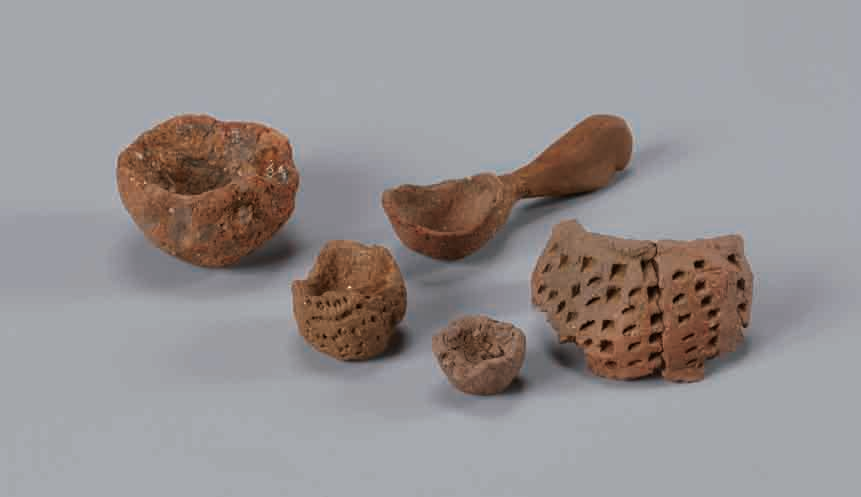
Miniature pottery vessels are believed to have been used for ceremonial purposes.
Artworks in Clay
Since clay is plastic, prehistoric pottery objects come in diverse shapes. This and the decoration with which it was embellished sets pottery apart from prehistoric stone tools. The decorative patterns ornamenting the surfaces of ancient pottery suggest that these items served aesthetic as well as practical purposes. Neolithic pottery from the Korean Peninsula can be generally categorized into three styles based on the method of surface decoration. There are pots with patterns based on raised clay bands or pinches. This decorative method was predominantly applied in the southern portion of the Korean Peninsula between 8,000 and 6,000 years ago. Another style is characterized by impressed patterns only around the mouth of the pot. Pots in this style were produced in areas along the east coast between 8,000 and 5,500 years ago. There is also comb pattern pottery, a type distinguished by incised or impressed dots and lines covering the entire surface of the pot. Comb pattern pottery emerged in central Korea 6,500 years ago and began to spread to other parts of the peninsula around 5,500 years ago. It eventually became established as the main pottery style of Neolithic Korea. The geometric patterns found on Neolithic pottery hint at the sense of spatial composition held by prehistoric peoples. Decorative dots and lines form symmetric patterns that strike a remarkable balance with each other. While making objects for everyday use, Neolithic humans reflected their personal aesthetics. Neolithic pottery is not only a tool, but a work of art.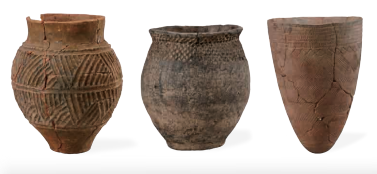
Three dominant styles of Neolithic pottery from the Korean Peninsula: (from left) a pot with raised clay bands; a pot with impressed patterns only around its mouth; and a comb-pattern pot with incised or impressed lines covering its entire surface
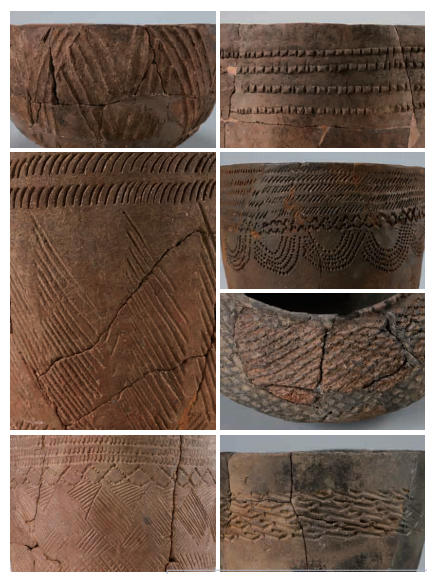
Diverse decoration methods and patterns applied to Neolithic pottery